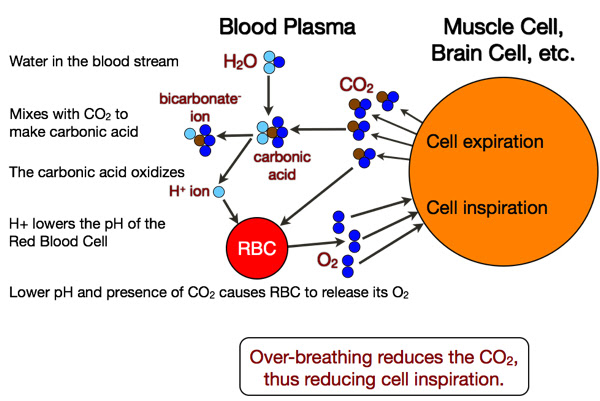The Art and Science of Breath
Your meditation will follow the way you breathe. Breath is the spirit behind life. Do you want more life or less life?
Breathing is an art and a science. By controlling your breath, you can control your metabolic rate, hormone levels, intelligence, circulation, heart rhythm, and more.
In the last 50 years we’ve been able to measure the oxygen and CO2 levels and understand their impact on the pH of the blood. Now we know how to breathe for optimum oxygenation, and there are some surprises. CO2 makes the blood acidic, while exhausting the CO2 makes the blood alkaline. There is a very narrow range of pH that is healthy: 7.35 to 7.45. Your body will automatically maintain that range unless you breathe in some abnormal way.
You may be outside the safe pH range. If so, you may feel dizzy, or sleepy, muscles may cramp, you could become hallucinogenic or blank out. These symptoms are the result of oxygen starvation in the muscles or brain, which usually comes from the blood becoming too alkaline.
To correct this, you need to make your in-breath and out-breath the same length, and not less than 6 seconds for each. A good way to time your breath is to count heartbeats: 6 heartbeats in, 6 heartbeats out. I can assure you that this rhythm is safe.

Often, people who are learning meditation modify their breath for some purpose. There is a breath for Out-of-Body experiences, and another breath that makes you hot enough to melt ice.
If you want to become “pure, luminous consciousness,” like Ram Dass says, then you want very little breath. I don’t recommend it. A subtle breath will make you subtle, like an angel.
If you want to become a full human being, then you need a full breath, a powerful breath, taken slowly. Think of your heart as you breathe. This will build a great light in your chest to power your health, relationships and accomplishments.
Blessings,
Puran Bair
Chancellor, The University of the Heart
How to Meditate with Your Heart: Get the Free Guided Meditation in Your Inbox




